EFF: Teaching Copyright (2009)
Filed under syllabus | Tags: · copyright, education, fair use, filesharing, free culture, intellectual property, internet, law, mashup, public domain, remix, technology

There’s a lot of misinformation out there about legal rights and responsibilities in the digital era.
This is especially disconcerting when it comes to information being shared with youth. Kids and teens are bombarded with messages from a myriad of sources that using new technology is high-risk behavior. Downloading music is compared to stealing a bicycle — even though many downloads are lawful. Making videos using short clips from other sources is treated as probably illegal — even though many such videos are also lawful.
This misinformation is harmful, because it discourages kids and teens from following their natural inclination to be innovative and inquisitive. The innovators, artists and voters of tomorrow need to know that copyright law restricts many activities but also permits many others. And they need to know the positive steps they can take to protect themselves in the digital sphere. In short, youth don’t need more intimidation — what they need is solid, accurate information.
EFF’s Teaching Copyright curriculum was created to help teachers present the laws surrounding digital rights in a balanced way.
Teaching Copyright provides lessons and ideas for opening your classroom up to discussion, letting your students express their ideas and concerns, and then guiding your students toward an understanding of the boundaries of copyright law.
Published by Electronic Frontier Foundation, May 2009
Creative Commons Attribution license 3.0 US
View online (HTML)
Comment (0)OVO, 1-20 (1987-2011)
Filed under magazine | Tags: · art, copyright, free culture, poetry, public domain

“OVO is a magazine published on an irregular basis introducing new works to the public domain. Issues are available in electronic form free of charge, printed editions at a nominal fee.”
Edited and published by Trevor Blake, Portland, Oregon
PDF, SXW (numbers 1-5, 7-14)
HTML (numbers 1-20, updated on 2017-12-2)
Issue 20: The Best of OVO, 1987-2011 (HTML, 2011)
OPEN Cahier on Art and the Public Domain, 6-24 (2004-2012)
Filed under magazine | Tags: · art, art criticism, censorship, contemporary art, copyright, critique, intellectual property, internet, memory, neoliberalism, politics, precariat, precarity, privacy, public domain, public space, security, social engineering, society, sound art, sound recording, surveillance, visual culture, web, web 2.0
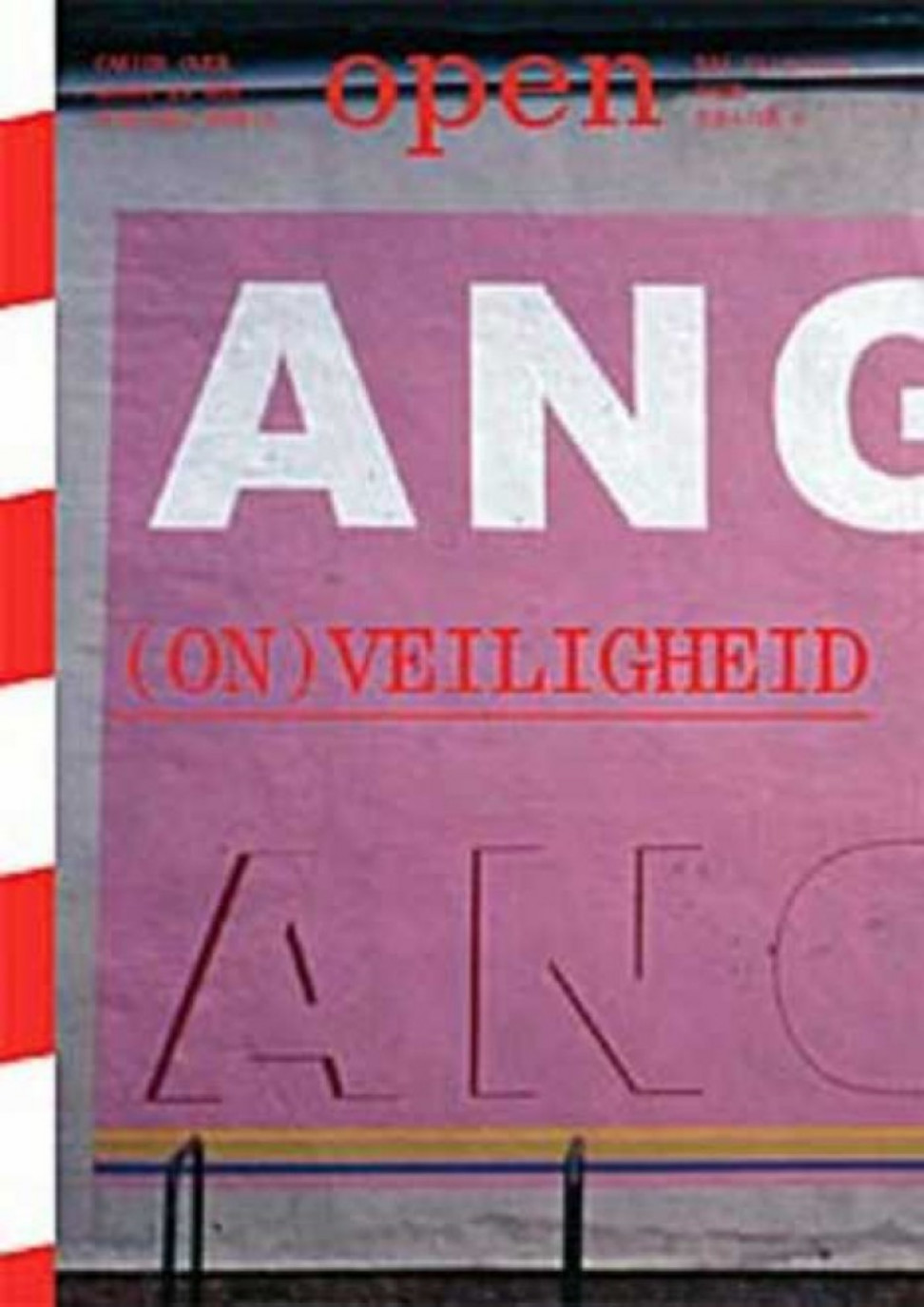
Open 6: (In)security, Apr 2004
There is a yearning for security in today’s public domain. The individual and the community are increasingly demanding protection and control over the space, themselves and others. A society of control is looming, but one lacking a clear idea about the nature and the origin of its underlying fears.
This cahier examines the consequences of the current preoccupation with security for the public space and the visual arts. What are the implications for the functioning of the public domain, for its arrangement, design and experience? And how does this influence the task and perception of art? From art, architecture, philosophy and politics come theoretical and practical scenarios, proposals and visions that expose something of today’s security paradigm, advocate alternative (conceptual) models or offer insights into the current ethics and aesthetics of security.
PDF (added on 2013-2-6)
HTML (added on 2017-12-2)
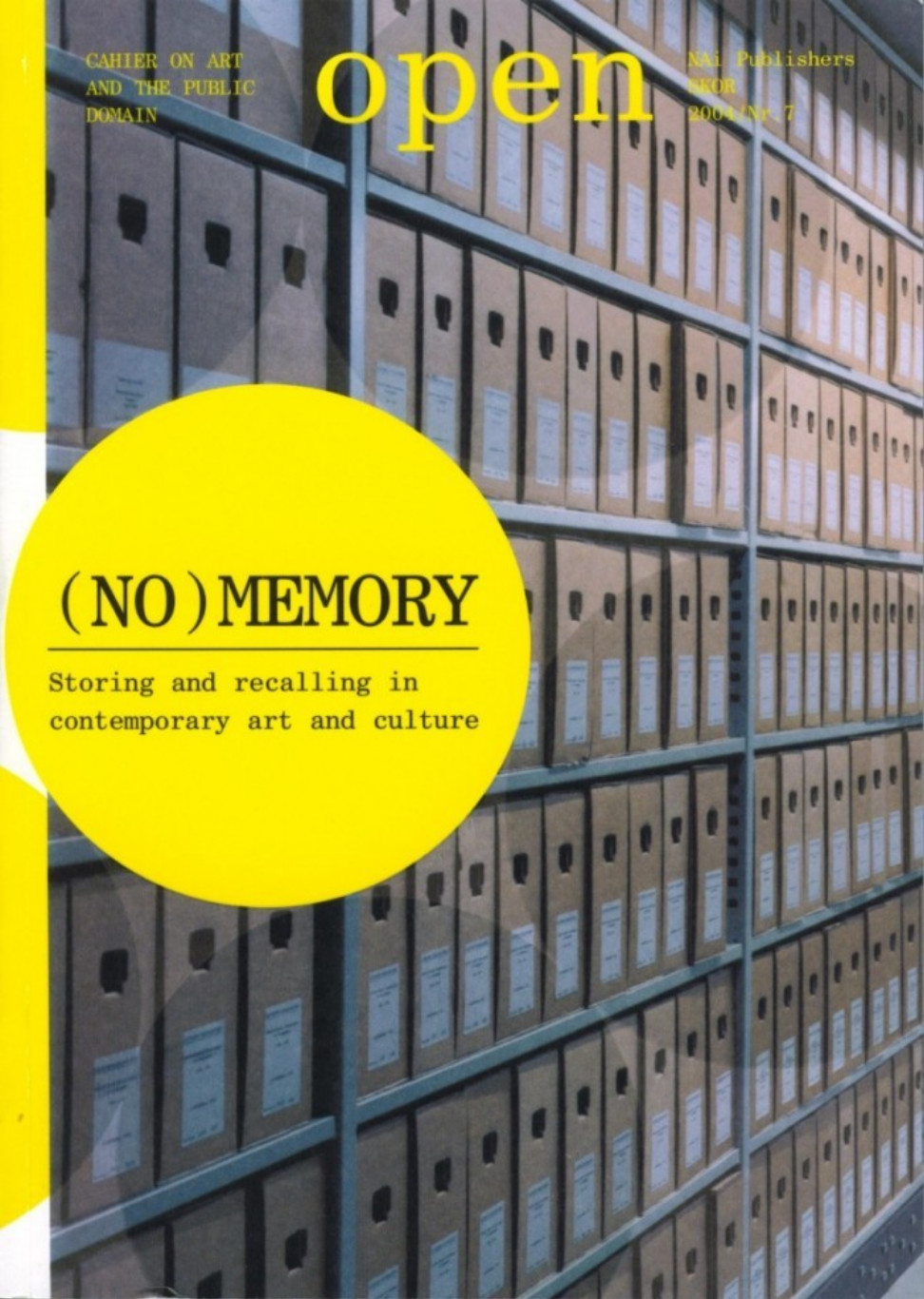
Open 7: (No)Memory. Storing and recalling in contemporary art and culture, Sep 2004
The present organization and experience of the public domain are to a significant extent defined by the tension between individual and collective, old and new, autochthonous and allochthonous memories. It is therefore imperative to re-examine the content, the control and the place of memory within the public domain.
How can active use be made of the information stored in the current ‘memory places’? What is the role of art in this? Is collective remembrance still possible? How can the cultural heritage be made accessible without turning city and country into one big open-air museum? And what are the implications of new media and digital storage technologies for the social and historical process of safe-keeping and remembering?
PDF (added on 2013-2-6)
HTML (added on 2017-12-2)
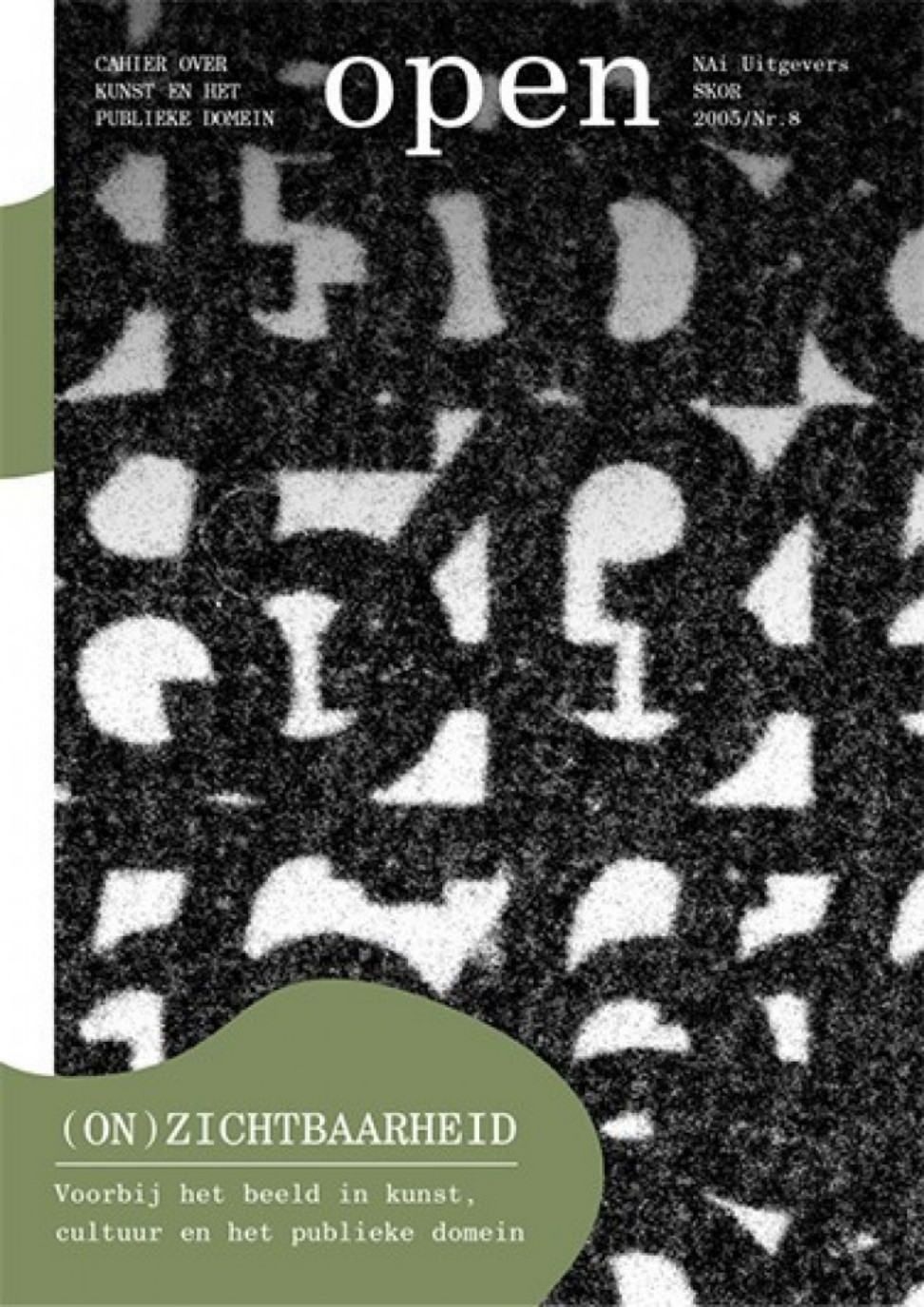
Open 8: (In)visibility. Beyond the image in art, culture and the public domain, Apr 2005
The degree of visibility of social, political, economic and cultural events through public images is regarded as an indicator of the level of democracy in a society. Visibility is associated with openness and communication, with social order and political stability.
The invisible represents not only the uncontrolled, impossible or suppressed but also that which is waiting to be disclosed. Within this regime the visual media continuously produces images while the ‘audience’ is also constantly engaged in visualizing its own experiences. In this intoxicating process every message of a social agenda seems to disappear. So what position does art have in this? What can be the commitment of the artist, designer or architect and his or her involvement and legitimacy? And which specific developments in contemporary visual culture play a role in this? On this issue the regular editorial staff worked together with guest editors, Willem van Weelden en Jan van Grunsven.
PDF (added on 2013-2-6)
HTML (added on 2017-12-2)
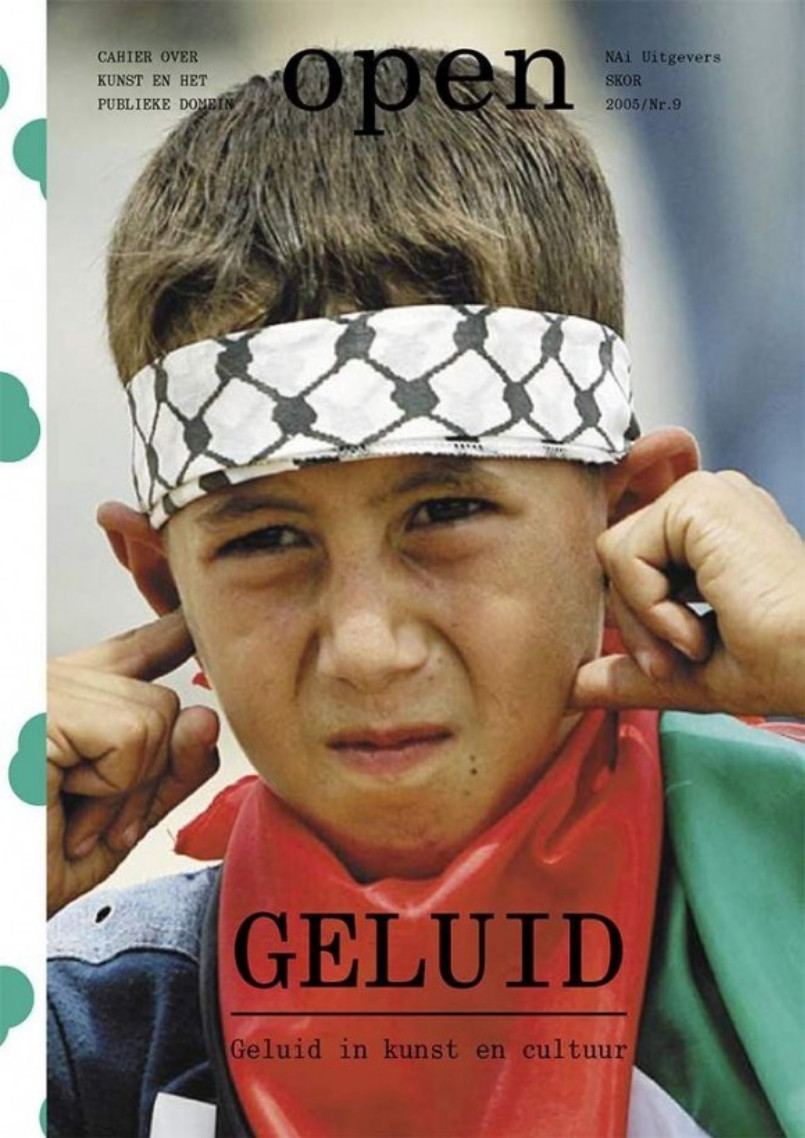
Open 9: Sound. Sound in Art and Culture, Nov 2005
Public space is not only visually but also acoustically manifest: public nature is a function of visibility and audibility.
Including the role of sound in reflections on public space and in its actual design is therefore as necessary as considering the visual. In n0. 9 there are essays about the way in which sound and audio media play an aesthetic, ethical or political role in contemporary urban space. This issue illustrates how radio is undergoing a veritable cultural and artistic revival and how sound is deployed in art in relation to social or spatial surroundings. This issue presents work by international artists and also includes an mp3 disc with sonic artworks and interviews.
PDF (added on 2013-2-6)
HTML (added on 2017-12-2)
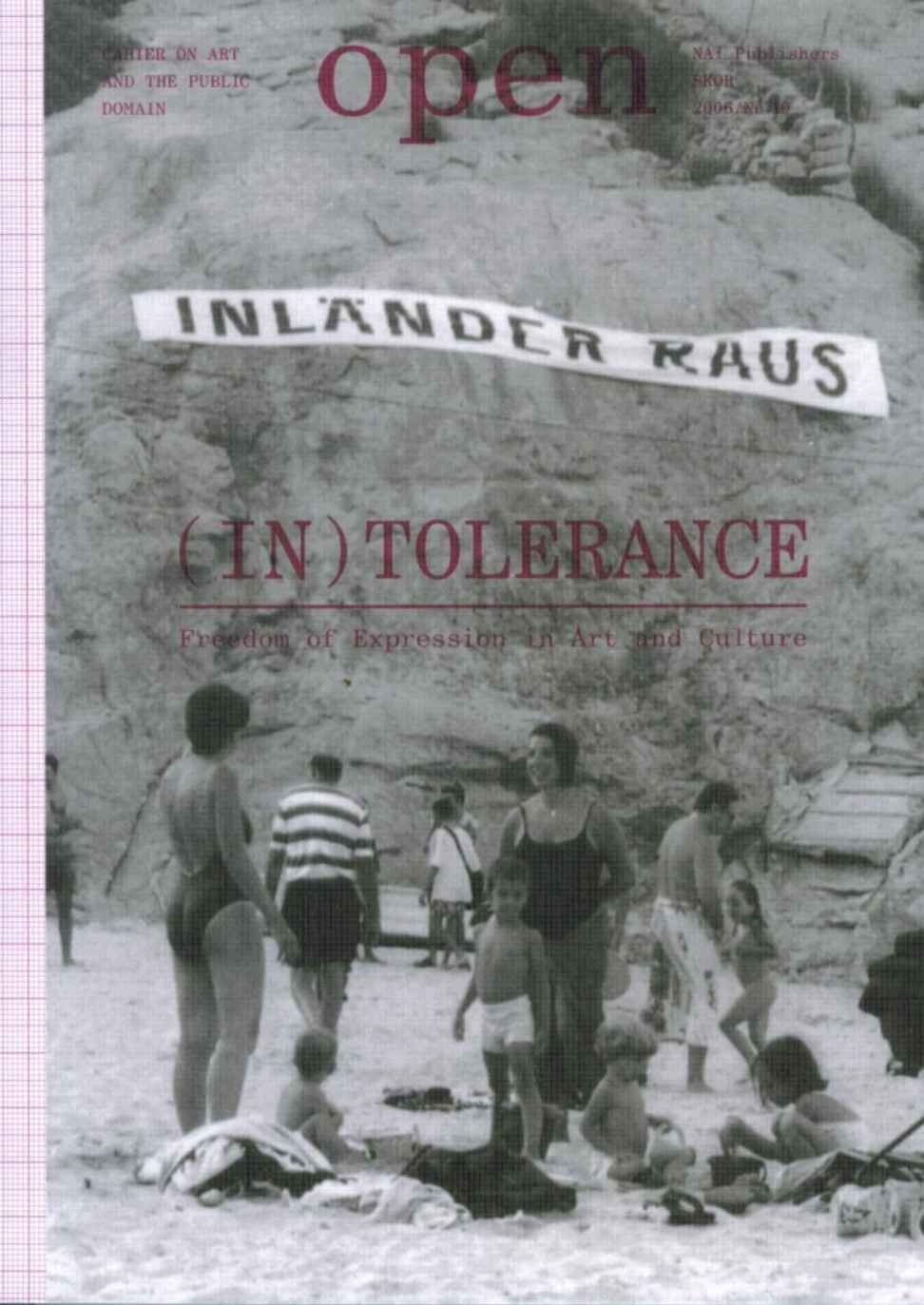
Open 10: (In)tolerance. Freedom of Expression in Art and Culture, May 2006
No discourse seems more hollow at the present moment than that about tolerance and freedom of expression: in Western culture these concepts are scarcely capable any longer of generating meanings that apply and appeal to all of us.
The codes, rules, agreements and symbols that determine our freedoms and rights within the public domain have ceased to function effectively. Leaving cynicism and nihilism behind, the politico-philosophical concept of the public sphere needs to be articulated anew. The desire for this is projected not just onto politics, but also onto art, architecture and the city. Open 10 brings together analyses, stances and proposals of theoreticians and artists.
PDF (added on 2013-2-6)
HTML (added on 2017-12-2)
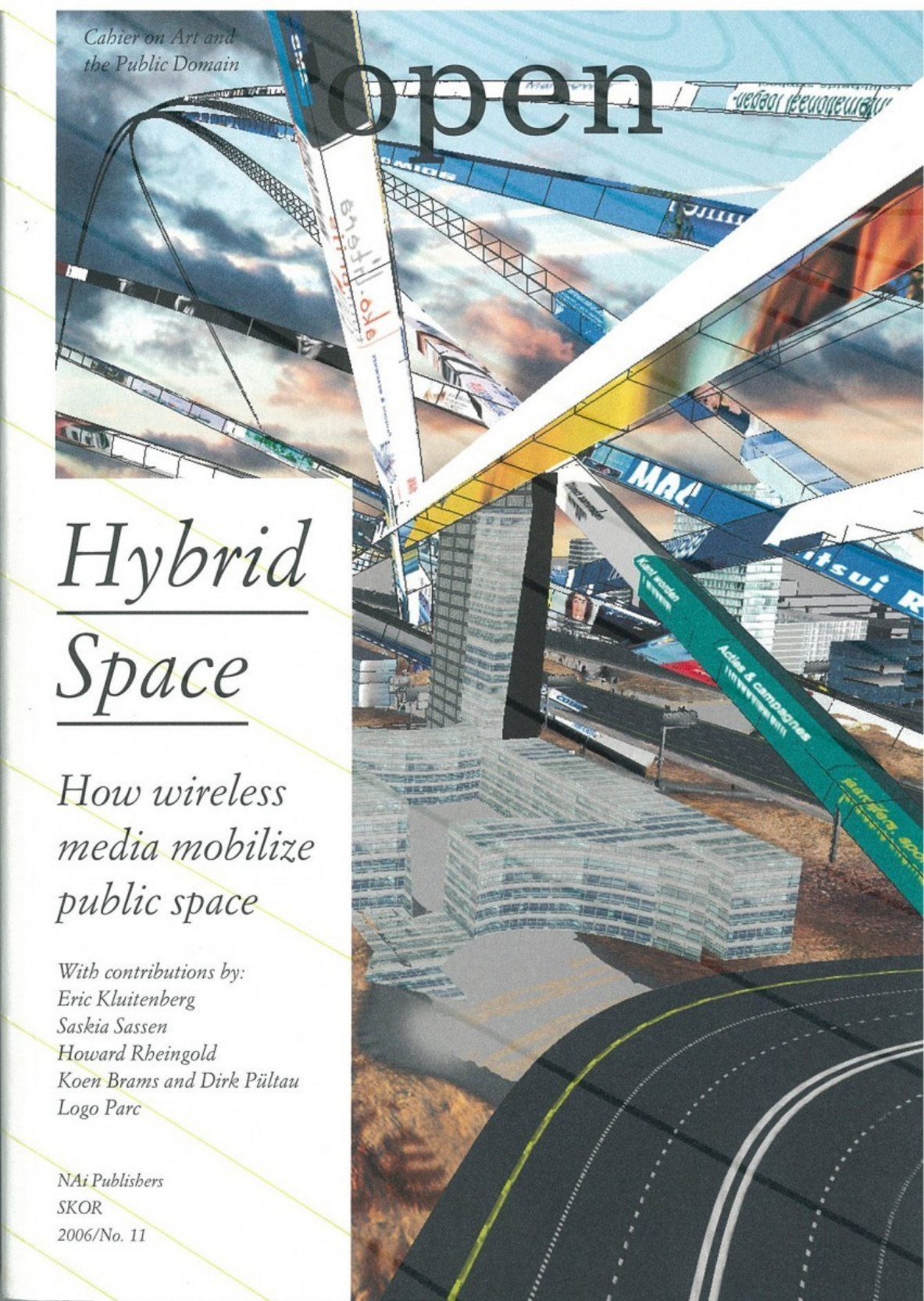
Open 11: Hybrid Space. How wireless media are mobilizing public space, Nov 2006
‘Open’ 11 investigates the implications and possibilities offered by wireless, mobile media in the hybrid public space.
The public domain is a place where people act and create a ‘communal world full of differences’. This space has become ‘hybrid’ in nature: a complex of concrete and virtual qualities, of static and mobile domains, of public and private spheres, of global and local interests. Last but not least, hybrid space is formed by wireless and mobile media like GSM, GPS, Wi-Fi and RFID. These media are deployed as control mechanisms, but also as alternative tools for increasing and intensifying public agency. A select company of artists, designers, architects and urban designers is investigating its implications and possibilities and putting them to the test.
PDF (added on 2013-2-6)
HTML (added on 2017-12-2)
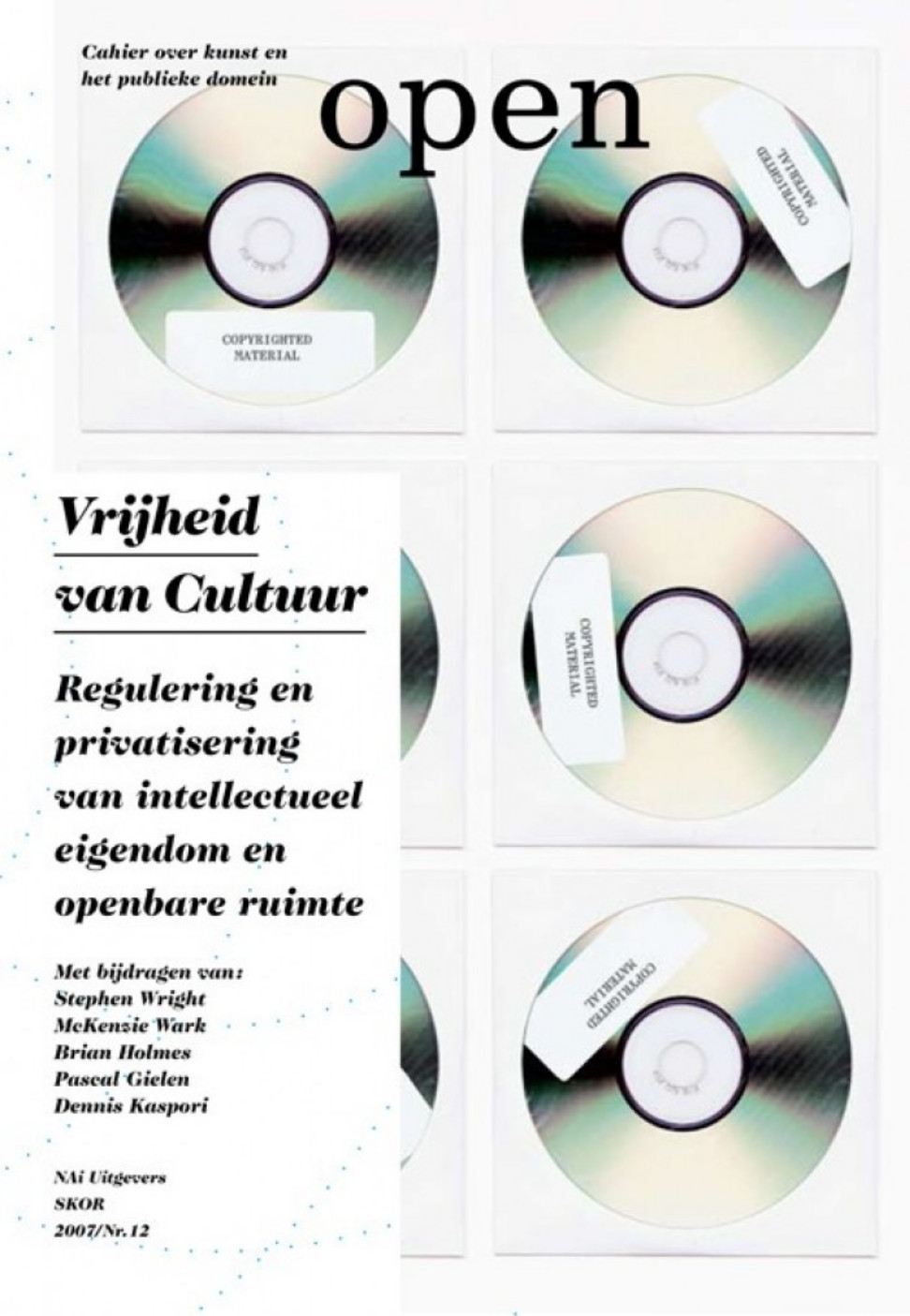
Open 12: Freedom of culture. Regulation and privatization of intellectual property and public space, Mar 2007
This issue of ‘Open’ focuses on questions regarding the privatization of intellectual property and presents several alternative approaches to urban design that aim to restore the communal dimension to public space.
The growing number of conflicts relating to the public and private ownership and control of knowledge and culture has lent a certain urgency to our thinking about the ‘common’ in the public domain. ‘Freedom of Culture’ has become a pressing issue with legal and ethical implications. To what extent can culture be freely distributed, exchanged or appropriated? And what guarantee is there for the continued existence of places where the ‘commons’ can manifest themselves and be discussed?
PDF (added on 2013-2-6)
HTML (added on 2017-12-2)
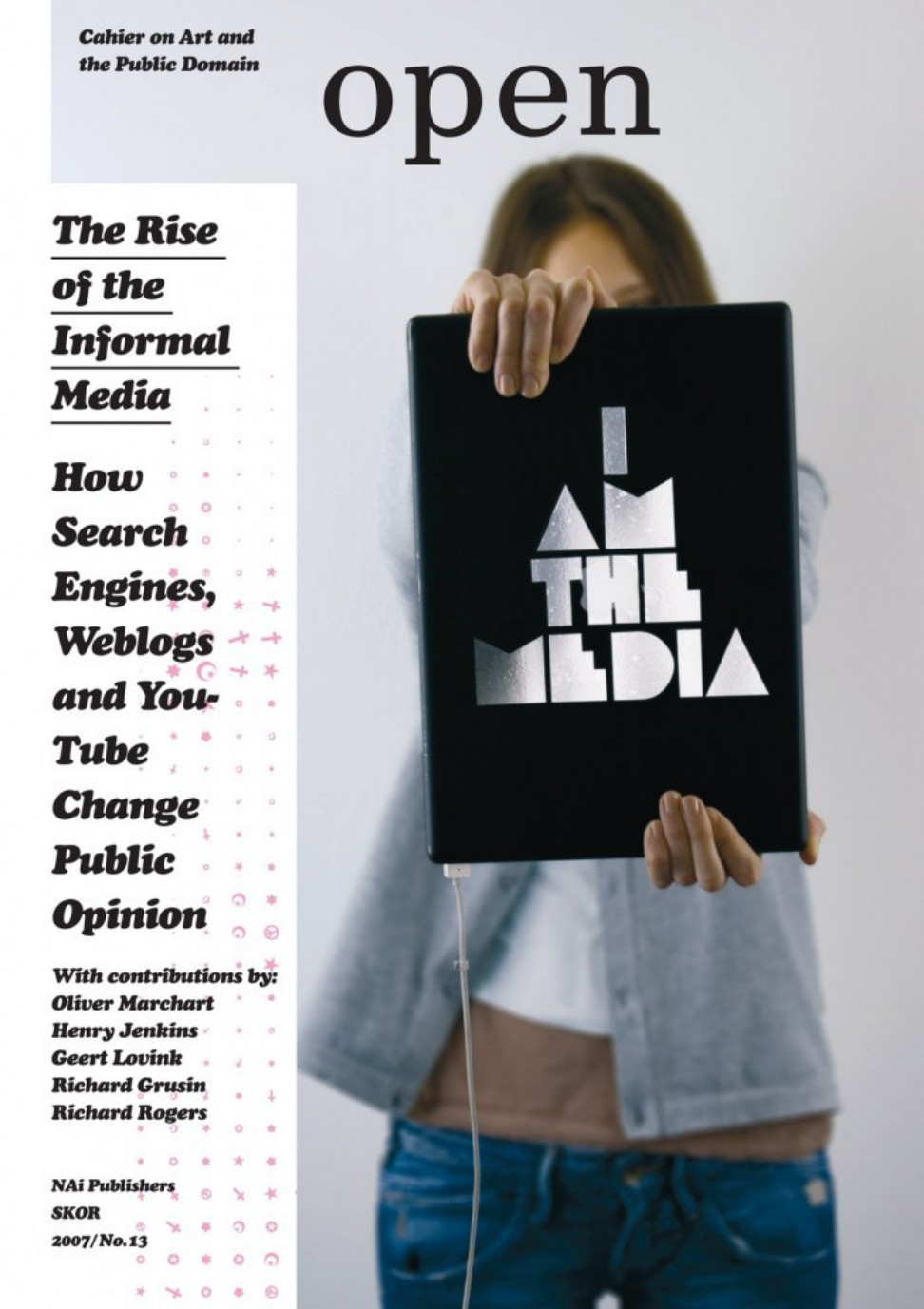
Open 13: The Rise of the Informal Media. How Search Engines, Weblogs and YouTube Change Public Opinion, 2007
This issue of ‘Open’ examines what the implications of the rise of the informal media are for the public sphere.
The media through which news and information are gathered and exchanged have expanded significantly in the last several years. Weblogs, advanced search engines, virtual environments like Second Life, and phenomena such as MySpace, Hyves, Flickr and YouTube are offering new tools, communication opportunities, social networks and platforms for public debate. These are informal media, largely programmed, supplied and broadcast by the user – in contrast to conventional macromedia like television and the printed press, which are more institutionally determined.
This issue of Open examines what the implications of this are for the public sphere. Questions are raised, among other things, about how news and information are handled on the internet, about the conditions of our everyday media practices and about the opportunities for artists to work in a culture in which the lines between maker and user, between amateur and professional, are being blurred.
PDF (added on 2013-2-6)
HTML (added on 2017-12-2)

Open 14: Art as a Public Issue. How Art and Its Institutions Can Reinvent the Public Dimension, 2007
The public sphere is an ideological construct that must be constantly reinvented and redefined. The impact of neoliberal forces is compelling even art and its institutions to reinvent, reformulate or re-legitimize their public dimension and involvement.
For both art and art institutions, after all, still manifest themselves at the sufferance of the public, the audience. They cannot avoid re-examining what is public and why, who the audience is and where it is situated, and how they wish to relate to it. Do they dare become part of ‘the political’, or do they let themselves become instruments of market players and party politics?
PDF (added on 2013-2-6)
HTML (added on 2017-12-2)

Open 15: Social Engineering. Can Society be Engineered in the Twenty-First Century?, 2008
This issue of ‘Open’ reflects on old and new forms of the philosophy of social engineering in relation to the urban and social space and to the (communal) life therein.
Is social engineering now a hollow ideal, or does it offer urgent perspectives once more? In current discussions about urban politics and social systems, theorists and designers are once again asking whether social engineering is not a pre-requisite of the human desire for organizational forms and interventions that guarantee a pleasant communal existence.
With contributions by Rene Boomkens, Gijs van Oenen, Marc Schuilenburg, Giorgio Agamben, Charles Esche, Niclone van Harskamp, Pascal Gielen, BAVO, ZUS, Partizan Publik, Flexmens, Jeanne van Heeswijk en Dennis Kaspori.
PDF (added on 2013-2-6)
HTML (added on 2017-12-2)
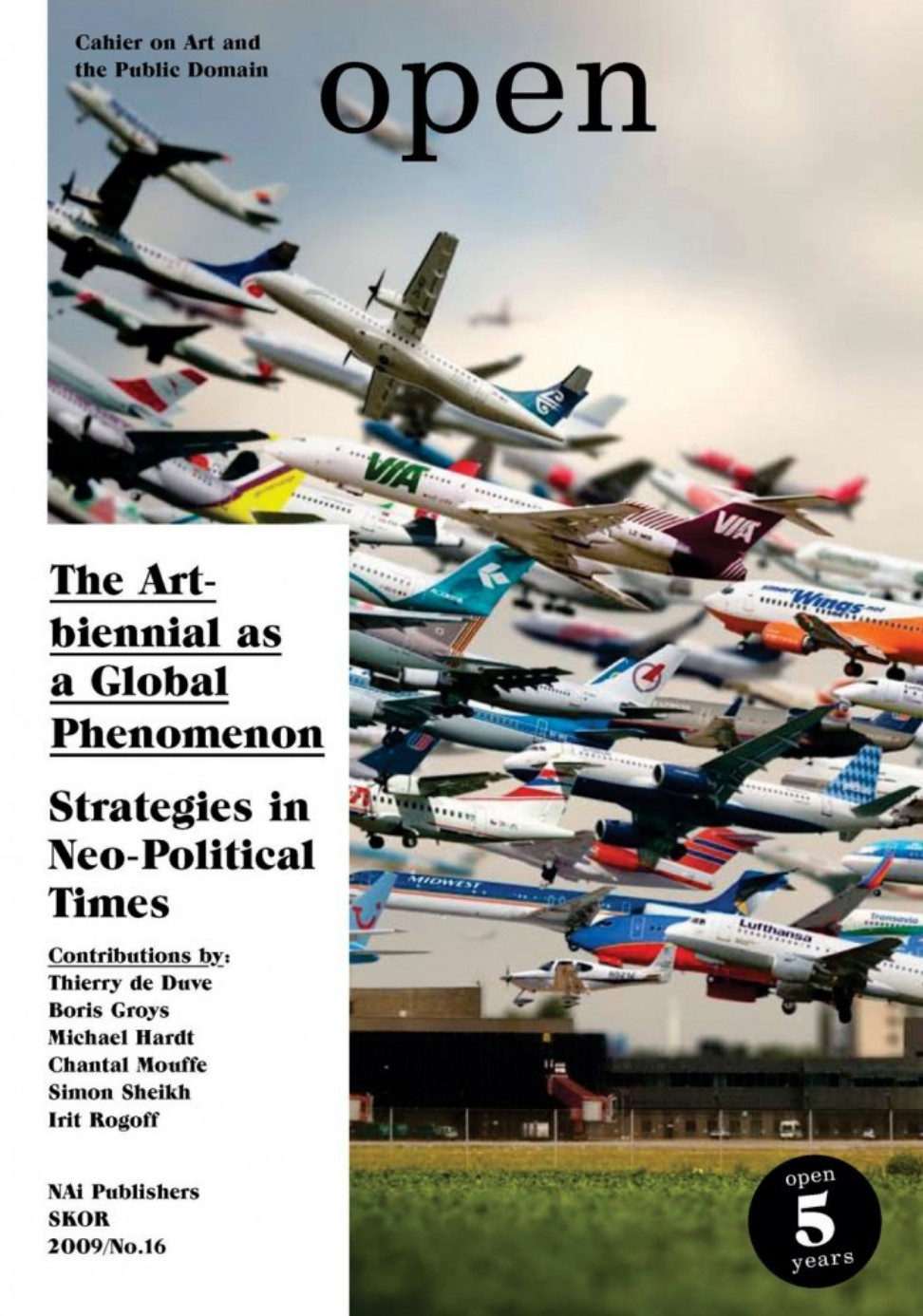
Open 16: The Art Biennial as a Global Phenomenon. Strategies in Neo-Political Times, 2009
This anniversary issue of ‘Open’ focuses on the art biennial as a global phenomenon.
On 19 October 2008, in connection with the first Brussels Biennial and in association with the Flemish-Dutch Huis deBuren, the Flemish foundation for visual, audio-visual and media art BAM and the Lectureship in Arts in Society of the Fontys College for the Arts, Pascal Gielen organised a programme of lectures and debates focussing on the art biennial as a global phenomenon.
The speeches by Chantal Mouffe, Michael Hardt, Boris Groys, Charles Esche and Maria Hlavajova are now being published in Open, Cahier on Art and the Public Domain, supplemented with essays by Brian Holmes, Irit Rogoff, Simon Sheikh and Thierry de Duve. The texts have been edited by Pascal Gielen and Jorinde Seijdel, editor-in-chief of Open. This extra issue of Open is also a jubilee issue to celebrate the fifth anniversary of the cahier in its present form.
PDF (added on 2013-2-6)
HTML (added on 2017-12-2)
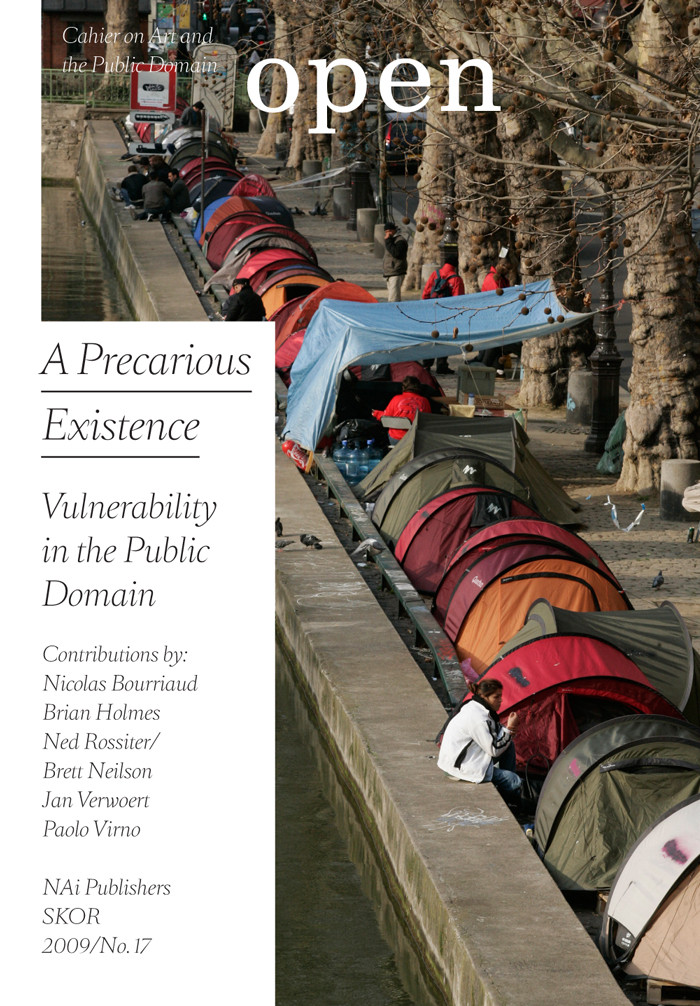
Open 17: A Precarious Existence. Vulnerability in the Public Domain, 2009
This issue of ‘Open’ addresses precariousness in a cultural and social context and deals with such matters as the functioning of the art scene and the conditions of the precarious city and public space.
For a few years now there has been an international discourse surrounding the notion of ‘precarity’ or ‘precariousness’, boosted by European social movements and philosophers such as Paolo Virno. Precarity refers to the relationship between temporary and flexible labour arangements and an existence without predictability and security, which is determining the living conditions of increasingly larger groups in society. Precarity occurs simultaneously at many places within society as a consequence of the neoliberal, post-Fordist economy with its emphasis on the immaterial production of information and services and continuous flexibility. The same is true of the creative sector: flexible production and outsourcing of work, typical aspects of the service economy, can also be seen in businesses devoted to art, culture and communication.
With contributions by Nicolas Bourriaud, Brian Holmes, Ned Rossiter/Brett Neilson, Jan Verwoert, Paolo Virno, Pascal Gielen/Sonja Lavaert, Gerald Raunig, Recetas Urbanas en Merijn Oudenampsen.
PDF (added on 2013-2-6)
HTML (added on 2017-12-2)
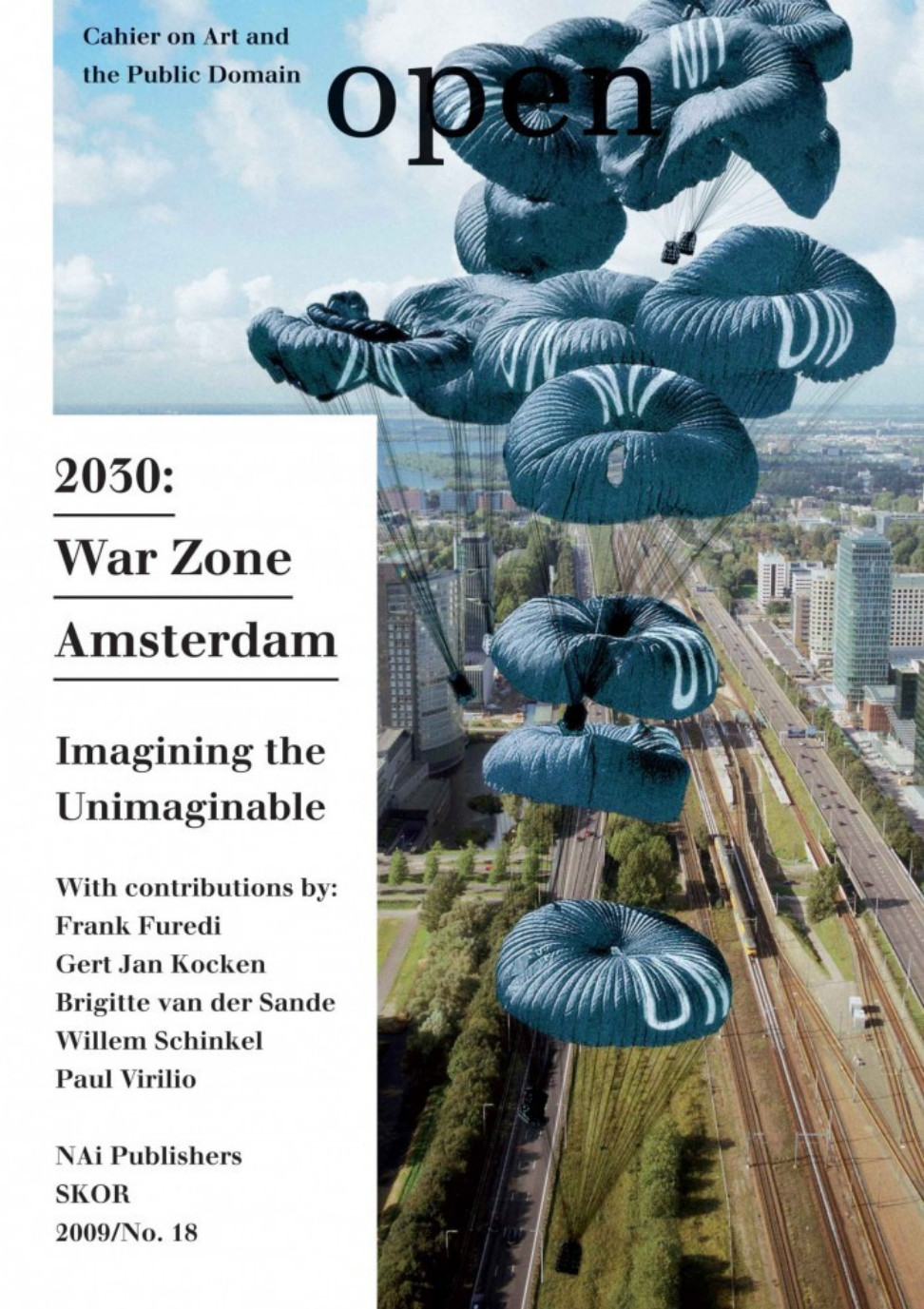
Open 18: 2030: War Zone Amsterdam Imagining the Unimaginable, 2009
Using Amsterdam as a test case, this issue of ´Open´ is about questions and problems facing contemporary Western cities in general: fear and safety, privacy and biopolitics, control and militarization, globalization and virtualization, commercialization and neoliberalism.
The contemporary social reality of Amsterdam, in which the debates on some social issues exhibit very little creative development, can be presented in a radically different light through the fictitious element of a war in Amsterdam 2030.
Brigitte van der Sande, curator of the art project ‘2030 War Zone Amsterdam’, was guest-editor.
With contributions by Brigitte van der Sande, Willem Schinkel, Dirk van Weelden, Stephen Graham, Frank Furedi, John Armitage, Tom McCarthy, Wietske Maas en Matteo Pasquinelli, Eyal Weizman, Gert Jan Kocken en het Israëlische duo Adi Kaplan & Shahar Carmel.
PDF (added on 2013-2-6)
HTML (added on 2017-12-2)
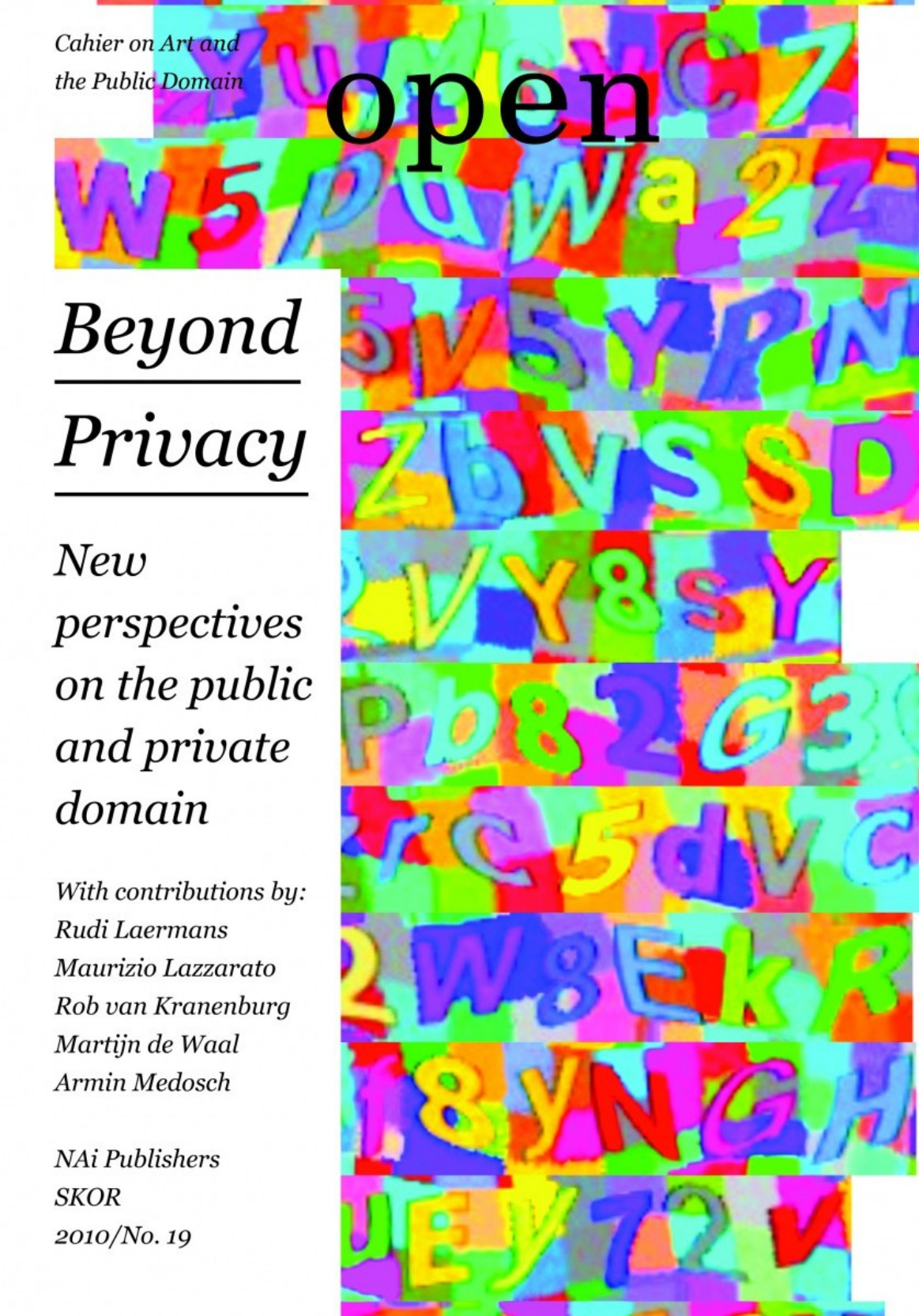
Open 19: Beyond Privacy. New Perspectives on the Private and Public Domains, Apr 2010
In ‘Open’ 19, the concept of privacy is examined and reconsidered from the legal, sociological, media theoretical and activist perspectives.
Privacy is a right that protects one’s private life, a right that is not only established by law, but also has a political and a social significance. It can be experienced and observed differently by individuals and groups, depending upon their position in society and the desires and interests that are involved. In Open 19 focuses not so much on deploring the loss of privacy, but taking the present situation of ‘post-privacy’ for what it is and trying to gain insight into what is on the horizon in terms of new subjectivities and power constructions.
With contributions by Daniel Solove, Maurizio Lazzarato, Rudi Laermans, Armin Medosch, Felix Stalder, Joris van Hoboken, Oliver Leistert Martijn de Waal, Rob van Kranenburg, Mark Shepard and Matthijs Bouw and Gio Sumbadze.
PDF (added on 2013-2-6)
HTML (added on 2017-12-2)
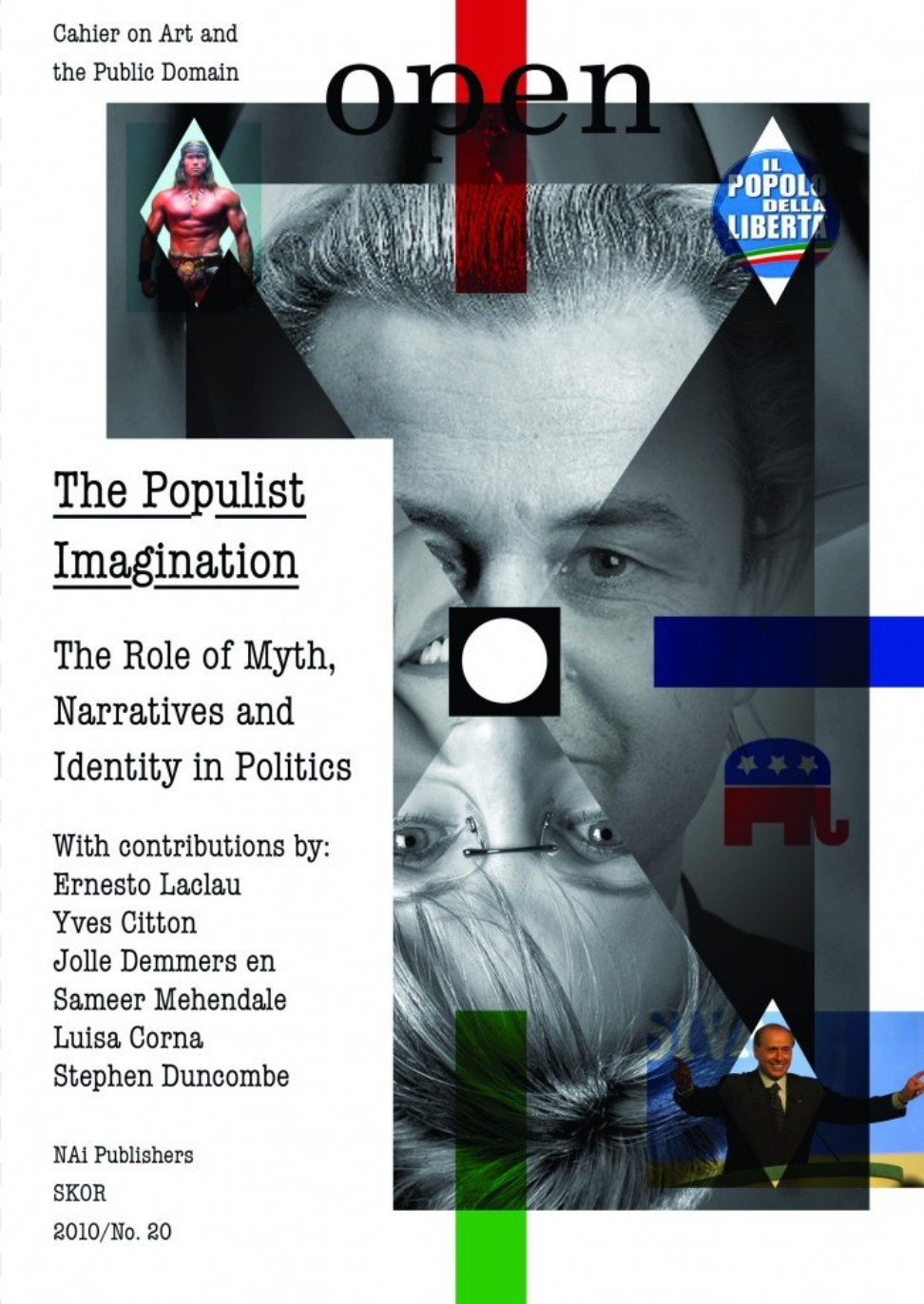
Open 20: The Populist Imagination. On the Role of Myth, Storytelling and Imaginary in Politics, 2011
“This issue of Open deals with the imaginary, storytelling and myth in populism and politics in general.
It is one of the most famous slogans of the revolt of May 1968: ‘All power to the imagination!’ Those who appeal to the imagination nowadays – Silvio Berlusconi, the Tea Party movement, the Dutch politician Geert Wilders – have altogether different intentions. Right-wing populist movements are storming the political stage in Europe and in the USA. The imagination is now put to work to sharpen and fix identities, to stir desire for an imaginary past, and to cultivate myth. This issue of Open deals with the imaginary, storytelling and myth in populism and politics in general.
With contributions by Merijn Oudenampsen (guest editor of Open 20), Stephen Duncombe, Franco Berardi and Marco Jacquemet, Jolle Demmers and Sameer S. Mehendale, Yves Citton, Nina Power, Wu Ming, Aukje van Rooden, Willem Schinkel, Foundland, Louisa Corma and Lunda Dematteo. Rudi Laermans interviews Ernesto Laclau.”
PDF (added on 2013-2-6)
HTML (added on 2017-12-2)
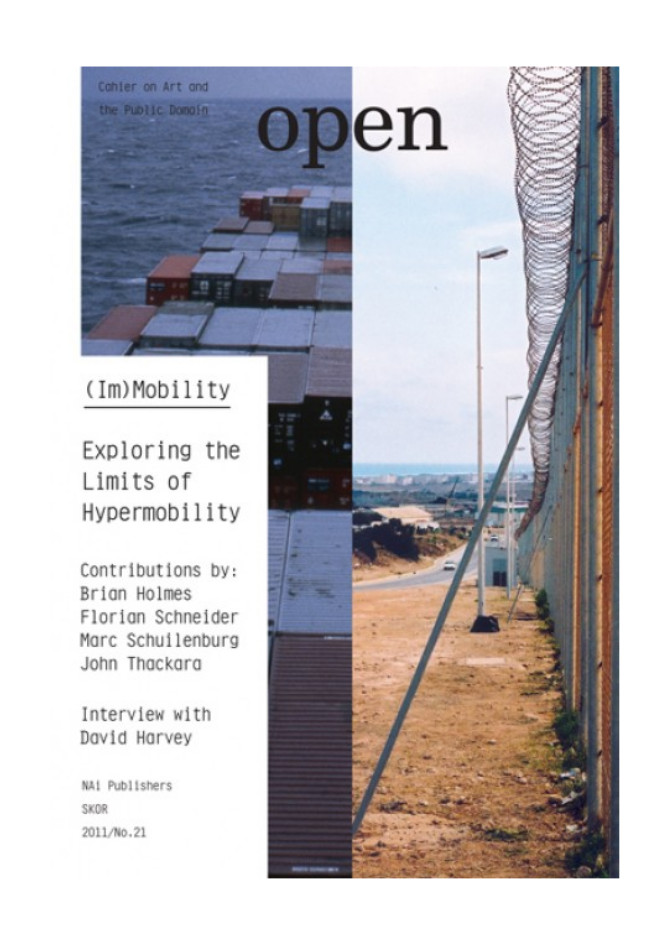
Open 21: (Im)Mobility. Do Containers Dream of Electric People?, May 2011
PDF (added on 2017-12-2)
HTML (added on 2017-12-2)
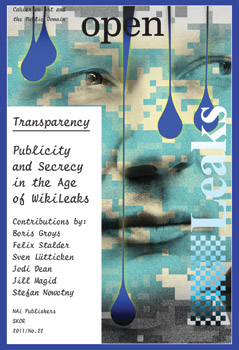
Open 22: Transparency: Publicity and Secrecy in the Age of WikiLeaks, Nov 2011
HTML (added on 2017-12-2)
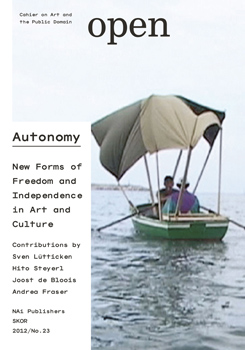
Open 23: Autonomy: New Forms of Freedom and Independence in Art and Culture, May 2012
HTML (added on 2017-12-2)
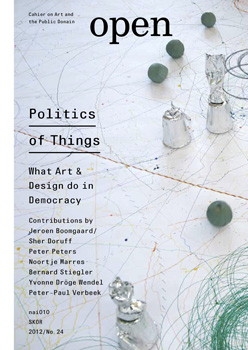
Open 24: Politics of Things: What Art & Design Do In Democracy, Nov 2012
HTML (added on 2017-12-2)
Open is a cahier that reflects upon contemporary public space from a cultural perspective. Through a thematic investigation into the changing conditions of public space and through new ideas relating to this space, Open aims to make a structural contribution to the development of theories about these subjects and to function as a platform for reflection on socio-cultural and artistic practices.
Editorial staff: Jorinde Seijdel (editor-in-chief), Liesbeth Melis (editor)
Design: Thomas Buxó in collaboration with Klaartje van Eijk
Initiated by SKOR | Foundation for Art and Public Domain.
Published by NAi Publishers, Rotterdam.

